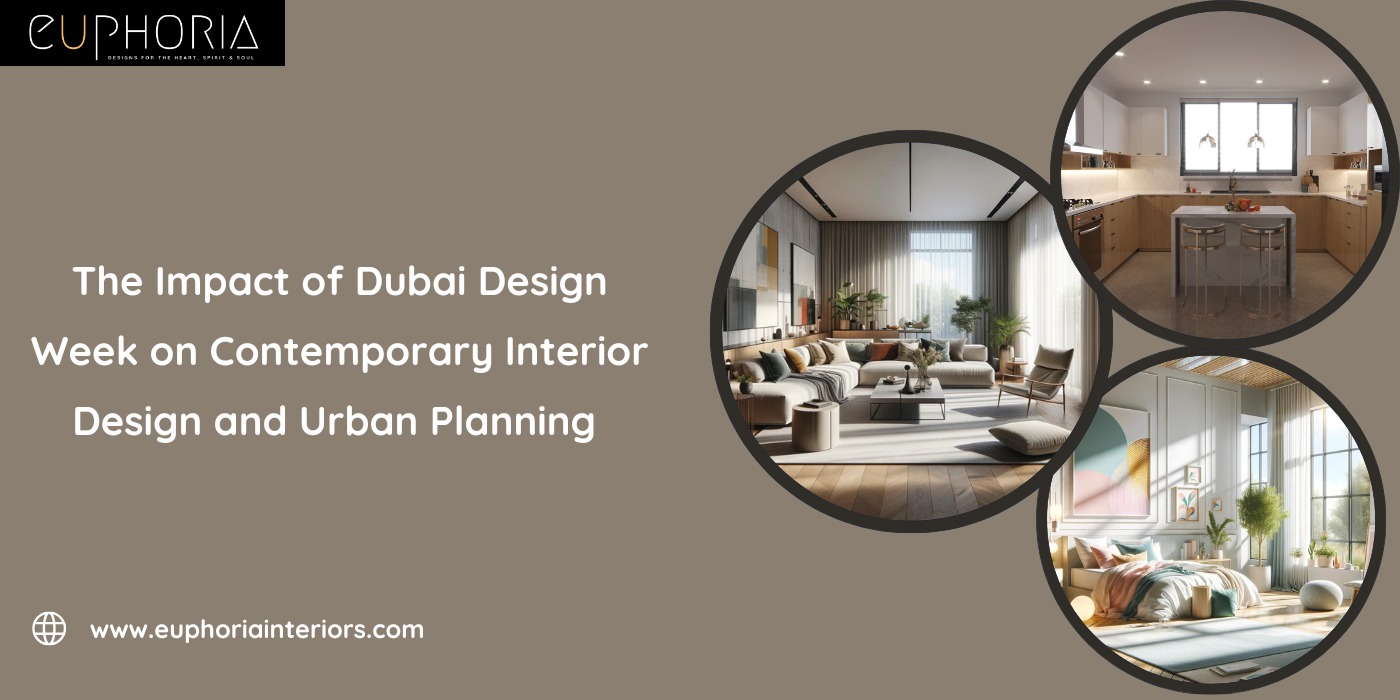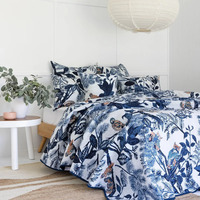Every interior design enthusiast knows about Dubai design Week and every year is excited about what’s new!Its 10th edition, this 2024 started from 5 Nov to 10 Nov 2024 with its exciting offers, but this is not the main motive of this blog. We are going to see this global event in a twisted manner which is very interesting! Today we’ll see the impact of Dubai Design week on contemporary interior and urban planning.
The Dubai Design Week is held annually to celebrate the growing design community in Dubai and help establish the city as one of the leading design hubs in the world. Running since 2015, the festival has blossomed from its original variety of exhibitions and programs.
More than a hundred thousand visitors enjoyed workshops, artisan exhibitions, student work from local universities, and projects of contemporary artists in the last edition. Dubai Design Week suggests to consumers with a growing disposable income that design is available to be acquired. The selection of design displayed is indicative of the importance of design in economic development in Dubai and the UAE.
Appreciating design in a place is integral to engagement. Dubai Design Week provides a platform for UAE design. Culture and design have economic consequences, establishing brands and capitalising on tourism. Enterprises at Dubai Design Week aim for quality craft and sustainability. The events of Design Week offer insights into the design field in Dubai and indicate sustainable materials and processes. This essay analyses the implications of Dubai Design Week for interior design and urban planning, starting by exploring its contribution to local design. The events and messages of Design Week are mixed together for this exploration.
Evolution of Dubai Design Week
Since it first launched in 2015, Dubai Design Week has quickly become one of the globe’s top international design festivals of the year. Design consultancy Vitra’s ambitious concept was inspired by Milan Design Week, which was launched in 1961 by a group of visionary designers and is still held every spring. The Vitra team was made up of Tanita Sandhu, Leila Stork, Maja Kuzmanovic, and Anthony Bechu. The idea was revived by three professional events directors who are well-known in the Gulf region: Pascal Labrousse, CY Rotter, and Wilfried Theil. The festival’s mission was multi-faceted: to support Dubai and the Gulf states’ emerging design community and attract attention from the international design community.
Dubai Design Week hoped to inspire collaboration among professionals and contribute to citywide promotions. The Vitra showroom hosted events for over 40 design-led brands. The festival coincided with the annual Index and expanded to three creative districts. These neighborhoods are now established in key areas of Dubai. Due to logistical issues, it was decided that one building would suffice.
Key Events and Initiatives
The Key Programs at Dubai Design Week 2024 will showcase a series of installations and pavilions with a focus on vernacular architecture in the SWANA region. This year’s Urban Commissions competition, titled ‘Tawila,’ will explore the significance of tables in facilitating exchange and communal experiences. There will also be exhibitions, activations, and large-scale installations by designers and brands throughout the festival.
A marketplace featuring regional designers and businesses will offer a curated selection of products, including homeware, fashion, and food experiences. The Forum at Downtown Design will host international and regional experts to discuss the latest trends in design, while Downtown Design itself will feature a wide range of international speakers, designers, and brands.
The event will be held under the patronage of Her Highness Sheikha Latifa bint Mohammed bin Rashid Al Maktoum, and supported by Dubai Culture and Dubai Design District (d3).
Case Studies of Successful Projects
Each year, Dubai Design Week presents case studies of innovative projects from the last edition in association with their designers, where an invited audience can take a detailed walkthrough of both the finished project and the working process. In the following piece, we present four of our most successful projects – ones leading an influential new direction. For each project, we outline its inception, context, vision, proposed solution, challenges, and future steps.
The renovation of the Lazy Hunters cafe presents an exemplary case of what refers to as viable ground. The Lazy Hunters project serves to corroborate that the collaboration of the owners, architect, and students can indeed refine and amplify the conceptual values that the designers first laid out in the invitation. In addition to this, the project elaborates how buildability can be considered at the concept stage of the design process.
The project also exemplifies the emerging phenomenon of urban interstices as a typology, influenced by rapidly densifying urban areas across the globe. Throughout the design process, and by consequence, the renovation of the cafe extended beyond a simple metaphorical invocation of ‘transformation’ (the original brief). Rather, the project looked to how a literal investigation of adaptive reuse could be explored and recontextualized when considered within mid-rise urban areas. By altering the form of the village, and by maintaining the existing urban fabric, our objective was to create an ecological approach to a small-scale commercial fit out.
Influence on Contemporary Interior Design
Dubai Design Week has gained public recognition as a major platform and advocate for design in the GCC. This is not only evident in the increasing attendance year on year, but also in the numerous design projects, brands, and new products that are launching during the event.
From interacting with several of these participants, a common thread becomes clear: Dubai Design Week is a barometer for the design industry. Designers and curators are often quoted as saying that they “always launch at Dubai Design Week because it’s where everyone goes and everyone sees it.” This will aim to trace how the festival impacts contemporary interior design. It is divided by influences, whether the exhibition or festival provoked it, how it reflects a current design movement, and a case study.
Emerging trends have the capacity to come from the exhibition design or as a mission-driven remit directly from the curators. The influx of multi-disciplinary talent in the region has also fostered design collaborations that encompass cross-disciplines. With design curators based in the region, unique design dialogues have emerged. This is a testament to the multi-faceted individuals changing the design landscape in their local areas.
The leading sponsors all articulate that they lead from design and that this type of forward-thinking commitment marks not only a selection process but a desired festival fashion. This was most evident in Dubai Design Week’s inaugural edition. A new type of creative has actively embraced a multi-faceted creative process. The contemporary interior outlook on craftsmanship, or lack thereof, illustrated a global “unsubscribe” to the waste reproductive capacities of 20th-century technology.
Influence on Urban Planning
DDW’s role in promoting and advancing concepts of urban development via design is mirrored in Dubai’s own quest to become a “smart” city of the future. The design philosophies reflected in the festival’s programming are integrated into strategies to develop new areas and retrofit mature parts of the city, where community-centric design, easy access, and equitable use are key values. Recent initiatives on spatial justice at DDW, on green spatial planning for healthy city ecosystems, on affordable and sustainable living, and on community engagement and co-creation were taken as the most relevant for this appraisal.
Dubai Design Week launched in 2015 and is currently in its 10th edition. DDW collaborates with various design teams of different scales and origins, including regional planners and architects based in Dubai, for a range of temporary installations and urban design prototypes and policy interventions that celebrate or redefine public and recreational space. Desert Cast, Bee’ah’s House of Wisdom, a’Alymon, OASIS, and Fossilus are concrete examples. These structures were visited by some 25,000 visitors and participants.
All representatives of the different design teams highlighted to us the impact of this event in fostering a new relationship, knowledge, and ways of working together with urban planners. In conjunction, the Role-Play workshop Perspectives on Evolution was held with 30 contributors. Two of the scenarios, affordable and sustainable just-in-time housing and low-income appropriate spaces, were questioned as crucial topics for interdisciplinary research in the field of urban policy.
Case Studies and Examples:
• Rus Al Khaima by Siba Sahabi / RAK Ceramic and Kuiper Companging: mapping of kinetic ceramic installations for flooring
• Coded Oasys by Matteo Preti: sustainable bioceramic xeriscape irrigated designs
• Coded Gardnas / Scopes x Europe and Ghassan Salameh and Eko SHARE: green space visions
• Lith Compass and Designer for Good: affordable just-in-time pop-up urbanity
• Cultural Ripples by 3 Adjoint Urban Platform
• Dubai-en-Stil-Art Edition by Hassan Hajjaj and Swatch
• Defining a Curriculum for Dubai by The Dubai Murals
• Scarcity Mapping by Sarah Kenderdine and Refik Anadol: heritage and development looking to the past to hold the future
• Lean Machine and An Unbroken Landscape by Zoe Gamlin and Graham Berwick: performance installations made disguised water harvesters.In conclusion, Dubai Design Week showcased a diverse range of innovative designs and creative expressions. The event provided a platform for local and international designers to collaborate and share their ideas. Through exhibitions, installations, and workshops, attendees were able to immerse themselves in the world of design and gain valuable insights into the industry. The event successfully highlighted the significance of design in shaping our everyday experiences and fostering creativity. Overall, Dubai Design Week was an inspiring and thought-provoking event that highlighted the limitless possibilities of design.


